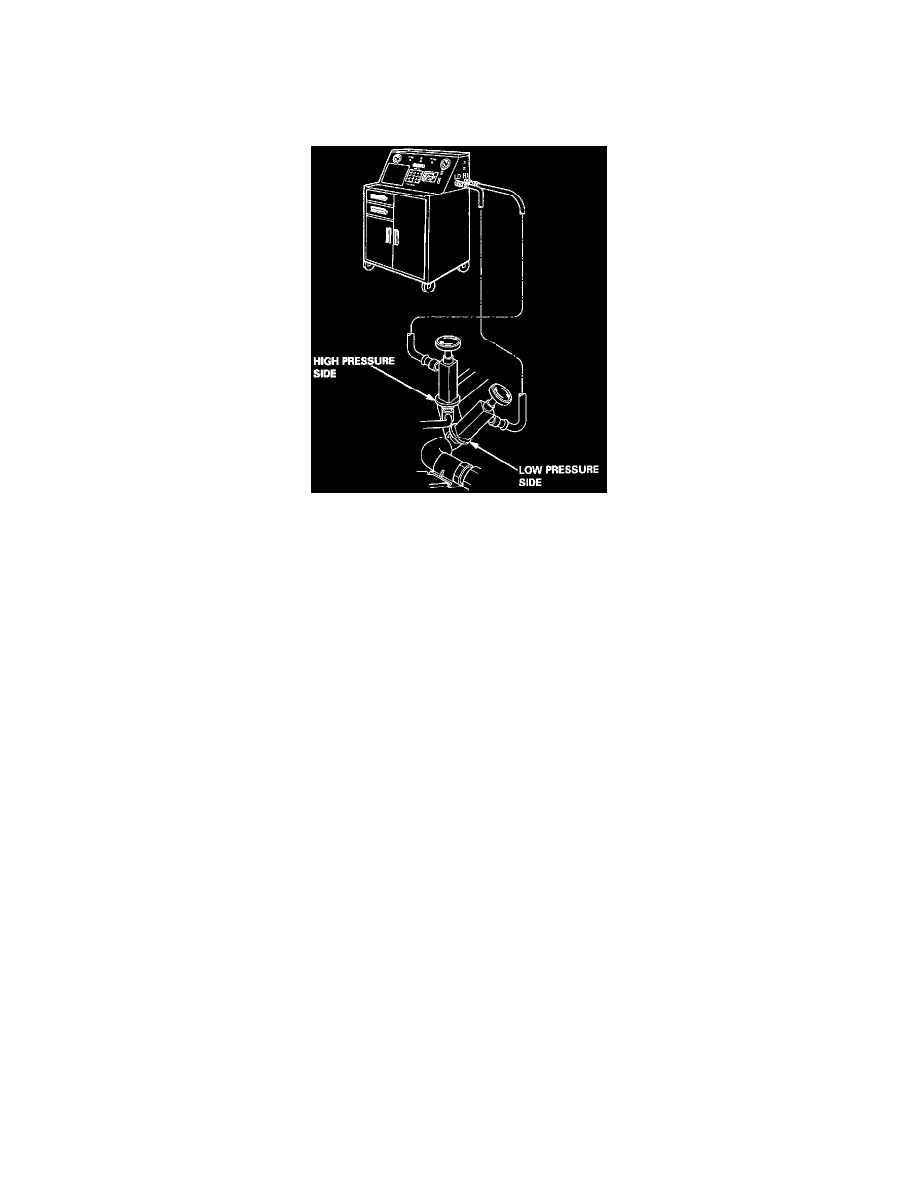Oasis S L4-2253cc 2.3L SOHC VTEC MFI (1998)

Refrigerant: Service and Repair
Refrigerant Recovery, Evacuating and Recharging
1. Recovery
Recovery
Use only service equipment that is U.L.-listed and is certified to meet the requirements of SAE J221O to remove HFC-134a (R-134a) from the air
conditioner system.
CAUTION: Exposure to air conditioner refrigerant and lubricant vapor or mist can irritate eyes, nose and throat. Avoid breathing the air
conditioner refrigerant and lubricant vapor or mist.
If accidental system discharge occurs, ventilate work area before resuming service.
R-134a service equipment or vehicle air conditioner systems should not be pressure tested or leak tested with compressed air.
WARNING: Some mixtures of air and R-134a have been shown to be combustible at elevated pressures and can result in fire or explosion
causing injury or property damage. Never use compressed air to pressure test R-134a service equipment or vehicle air conditioner systems.
Additional health and safety information may be obtained from the refrigerant and lubricant manufacturers.
1. Connect a R-134a refrigerant Recovery/Recycling/Charging System to the vehicle, as shown, following the equipment manufacturer's instructions
2. Measure the amount of refrigerant oil removed from the A/C system after the recovery process is completed.
NOTE: Be sure to install the same amount of new refrigerant oil back into the A/C system before charging.
2. Evacuating
